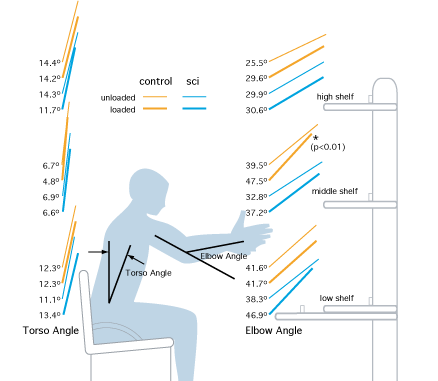In many task analyses using digital human figure models, only the terminal or apparently most stressful posture is analyzed. For reaches from a seated position, this is generally the posture with the hand or hands at the target. However, depending on the characteristics of the tasks and the people performing them, analyzing only the terminal posture could be misleading. This possibility was examined using data from a study of the reaching behavior of people with spinal cord injury. Participants performed two-handed forward reaching tasks. These reaches were to three targets located in the sagittal plane. The terminal postures did not differ significantly between those with spinal cord injury and those without. However, motion analysis demonstrated that they employed distinct strategies, particularly in the initial phase of motion. The location of the center of pressure throughout each motion was calculated using inverse dynamics and was found to be a good indicator of the strategies employed and the behavior differences between the two groups.

